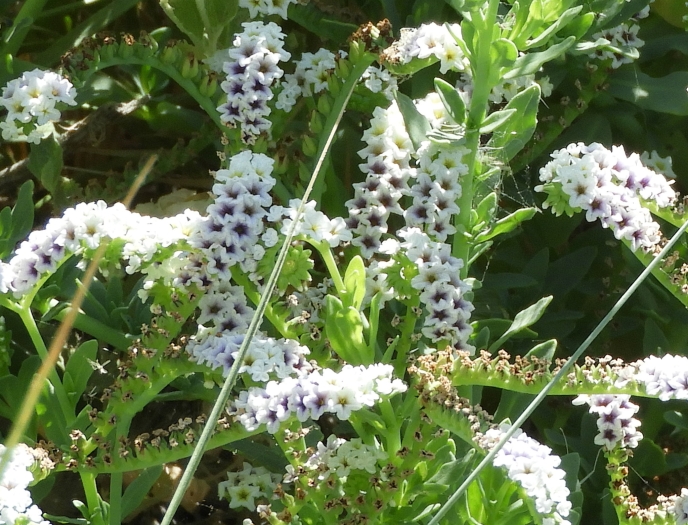Salt Heliotrope
(Heliotropium curassavicum)
Salt Heliotrope (Heliotropium curassavicum)
/
/

Mary K. Hanson
CC BY 4.0






































































Estimated Native Range
Summary
Salt Heliotrope is valued for its ability to thrive in challenging saline conditions and its resilience to drought, making it suitable for xeriscaping and coastal gardens. It is also used for erosion control and as a ground cover in appropriate regions. In cultivation, it requires full sun exposure and can tolerate low to medium water conditions, preferring soils with medium to fast drainage. While it is not known for its showy flowers, the plant’s unique coiling inflorescences and salt tolerance make it an interesting choice for gardeners. However, it can be potentially invasive in some regions, so caution is advised when planting it outside its native range.CC BY-SA 4.0
Plant Description
- Plant Type: Herb, Subshrub
- Height: 1-2 feet
- Width: 2-3 feet
- Growth Rate: Moderate
- Flower Color: White
- Flowering Season: Spring
- Leaf Retention: Evergreen
Growth Requirements
- Sun: Full Sun
- Water: Low, Medium
- Drainage: Medium, Fast
Common Uses
Bee Garden, Bird Garden, Butterfly Garden, Deer Resistant, Drought Tolerant, Hummingbird Garden, Low Maintenance, Rock Garden, Salt Tolerant, Showy Flowers
Natural Habitat
Coastal areas, saline soils, alkaline habitats, and disturbed sites
Other Names
Common Names: Smooth Heliotrope, Seaside Heliotrope, Seashore Heliotrope, Alkali Heliotrope, Quail Plant, Héliotrope De Curaçao, Strandheliotrop, Köttheliotrop, Eyebright
Scientific Names: , Heliotropium curassavicum, Heliotropium curassavicum var. curassavicum, Heliotropium curassavicum var. xerophilum, Heliotropium xerophilum, Heliotropium angustifolium, Heliotropium chenopodioides, Heliotropium chilense, Heliotropium glaucophyllum, Heliotropium lehmannianum
GBIF Accepted Name: Heliotropium curassavicum L.